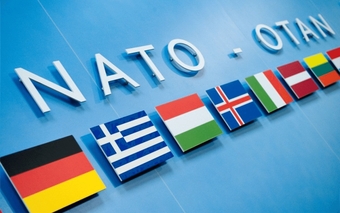
The course "Yes, it works online" is the second part of a training course on the basics of pedagogy and didactics. It includes full coverage and provides practical tips and advice on teaching online. Topics include characteristics of online learners, online teaching methods, tool and multimedia, and forms of online interaction and assessment.
Course structure:
- Introduction
- Online participants
- Teaching methods
- Online interactions
- Tools and multimedia
- Online assessment
Upon completion of the course, the option to generate a certificate with a personalized QR code will be made available. After obtaining the certificate, the participant will not be able to access the course resource again. For commercial courses, such access will be provided.

The course "Will It Work Online" covers the basics of pedagogy and didactics, discussing such topics as learning theories, motivation, the teaching relationship model, teaching methods and assessment.
Course structure:
- Introduction,
- Behaviorism, cognitivism,
- What is knowledge? How we learn,
- Motivation,
- Learning strategies,
- Teaching relationship model,
- Work practices and teaching methods,
- Assessment.
Upon completion of the course, the option to generate a certificate with a personalized QR code will be made available. After obtaining the certificate, the participant will not be able to access the course resource again. For commercial courses, such access will be provided.

Learning objectives:
- Understand the historical circumstances leading to the establishment of NATO and the significance of the Washington Treaty.
- Identify the key elements of collective defense and their importance in NATO's mission.
- List the current member states of NATO
- Familiarize with NATO's organizational structure
- Gain knowledge about NATO's external partnerships and their role in enhancing global security.
- Acquire an understanding of NATO's decision-making process and the mechanisms through which important policy decisions are made.
Course duration: 90 minutes
Course introduction to NATO offers vast and simple introduction to the historical overview of NATO, today’s look at NATO structure, institutions, and external partnerships. Participants will also gain knowledge about the decision-making processes in NATO as well as the strategic concept and current key political issues.
Participants will follow 5 modules, each focused on specific area in NATO organization:
1. Module 1 - A historical overview of NATO
- The circumstances leading to the Washington Treaty.
- The Washington Treaty.
- The key elements of collective defence.
- List NATO's current members and its membership process.
- NATO’s organizational structure, including civilian and military.
- The international institutions which comprise the Euro-Atlantic security architecture and how these institutions interact with NATO.
- External NATO partnerships.
3. Module 3 - NATO's decision making process
- NATO's decision-making process.
- The NATO Defence Planning Process.
- The process for creating a new policy in NATO.
4. Module 4 - NATO's strategic concept
- The initial steps taken by the Alliance for the formulation of a new Strategic Concept.
- NATO’s enduring purpose and its fundamental security tasks.
- Collective Defence and crisis management.
5. Module 5 - NATO's key political issues
- NATO’s efforts on major global security challenges affecting Allies’ security and defence.
- NATO’s reform toward a more effective, efficient, and flexible Alliance.
- NATO’s enlargement policy.
- Recall NATO’s actions which support the implementation of UNSCR 1325.

The English Language Training Enhancement Course (ELTEC) is a practical course to develop essential communication and language skills for NATO/PfP. You will also learn how to use English Language skills to respond to many different situations in NATO and other international meetings that you can encounter.
This course is divided into ten sections:
- Direct and Concise Language - In this section, you will learn how to edit and modify sentences for directness and conciseness.
- Cohesion (Types of Transitions) - In this section, you will learn the difference between transitions of logic and thought, as well as how to select proper transitions in written communication.
- The tone in Written Communications - In this section, the objective is to raise awareness of tone’s effect on readers in written communication. You will learn the best wording to use tone in writing.
- Parallel Structure - In this section, you will be provided with information on how to use parallel structure in writing.
- Gender-Neutral Language - In this section, you will be presented with good practices to avoid using gender-specific pronouns for gender-mixed groups.
- Common Phrases - In this section, you will become familiarized with multiple options for common professional phrases, as well as learn how to use common NATO phrases to achieve a professional style in writing.
- Using “the” - In this section, you will learn how to identify nouns that require a preceding “the”.
- NATO Spelling - In this section, you will be provided information on how to use the Oxford English spelling for NATO documents, as well as how to identify common spelling mistakes and correct them.
- Hyphen Usage - In this section, you will learn simple rules on how to use proper hyphens in words used together as adjectives.
- Comma Usage - In this section, you will earn how to identify and use proper comma phrases, as well as practice using commas in writing Content
Upon completion of the course, the option to generate a certificate with a personalized QR code will be made available. After obtaining the certificate, the participant will not be able to access the course resource again. For commercial courses, such access will be provided.

Cyber security has become a topic of utmost importance for every Internet user. In just 30 minutes or so, you will learn 10 principles of cyber security that will help you use the Internet responsibly.
List of modules:
- Be aware of the risks
- Decide what you want to protect
- Protect your IT equipment
- Protect your data
- Protect your Internet connection
- Cloud - be careful
- Think before you open an email
- Don't install software from an unknown source
- Make sure you have an up-to-date antivirus program
- Don't be crazy!
Upon completion of the course, the option to generate a certificate with a personalized QR code will be made available. After obtaining the certificate, the participant will not be able to access the course resource again. For commercial courses, such access will be provided.

The aim of the course is to raise the level of multicultural awareness and enable us to understand the essence of this phenomenon, in addition to presenting a palette of various issues of cultural significance that affect us on a daily basis.
The course structure is based on six days of the week, from Monday to Saturday, while each day constitutes one lesson. Each lesson covers different issues presented in the form of case studies (questions with one correct answer).
Upon completion of the course, the option to generate a certificate with a personalized QR code will be made available. After obtaining the certificate, the participant will not be able to access the course resource again. For commercial courses, such access will be provided.
